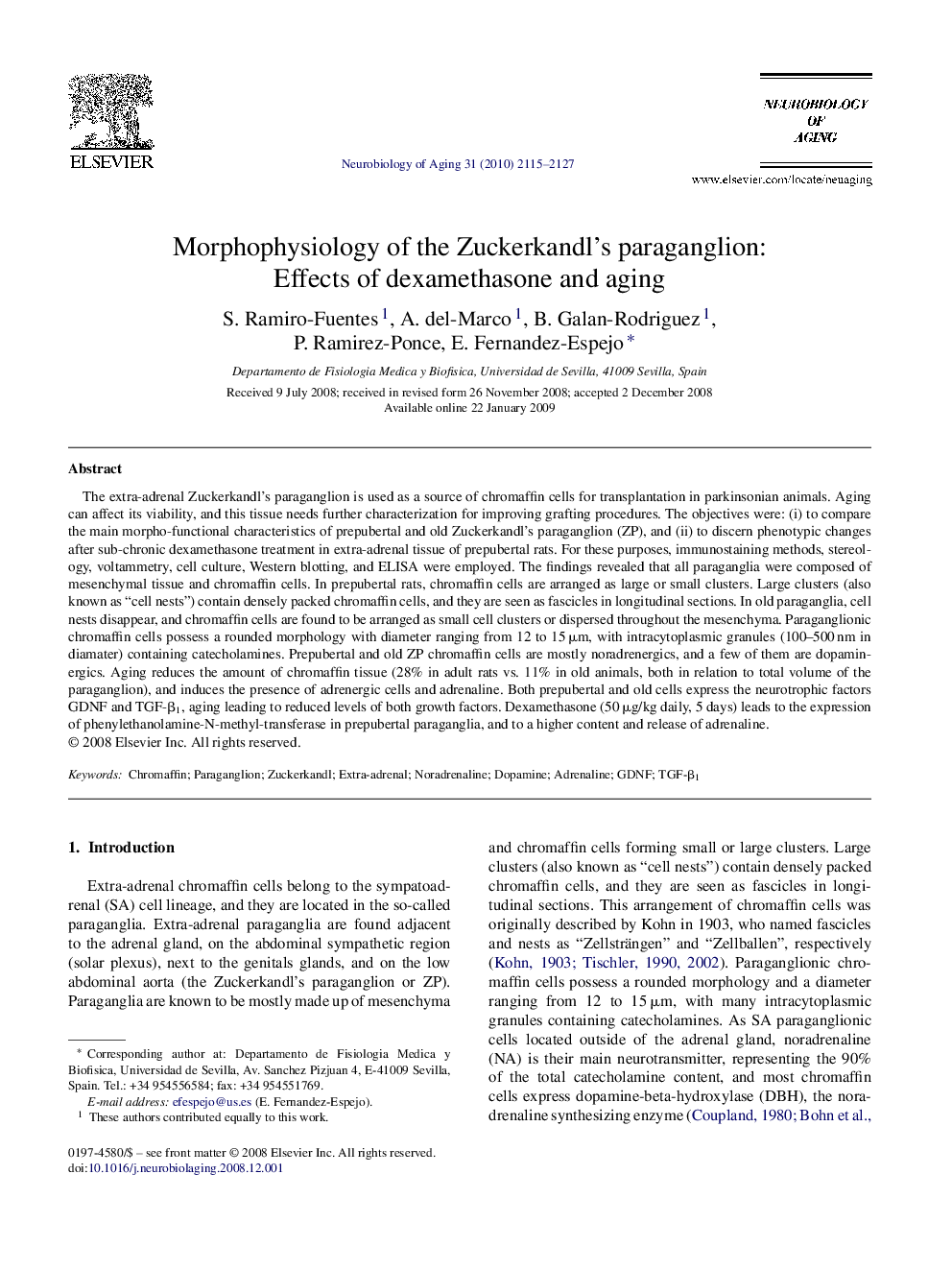| کد مقاله | کد نشریه | سال انتشار | مقاله انگلیسی | نسخه تمام متن |
|---|---|---|---|---|
| 331023 | 1433614 | 2010 | 13 صفحه PDF | دانلود رایگان |

The extra-adrenal Zuckerkandl's paraganglion is used as a source of chromaffin cells for transplantation in parkinsonian animals. Aging can affect its viability, and this tissue needs further characterization for improving grafting procedures. The objectives were: (i) to compare the main morpho-functional characteristics of prepubertal and old Zuckerkandl's paraganglion (ZP), and (ii) to discern phenotypic changes after sub-chronic dexamethasone treatment in extra-adrenal tissue of prepubertal rats. For these purposes, immunostaining methods, stereology, voltammetry, cell culture, Western blotting, and ELISA were employed. The findings revealed that all paraganglia were composed of mesenchymal tissue and chromaffin cells. In prepubertal rats, chromaffin cells are arranged as large or small clusters. Large clusters (also known as “cell nests”) contain densely packed chromaffin cells, and they are seen as fascicles in longitudinal sections. In old paraganglia, cell nests disappear, and chromaffin cells are found to be arranged as small cell clusters or dispersed throughout the mesenchyma. Paraganglionic chromaffin cells possess a rounded morphology with diameter ranging from 12 to 15 μm, with intracytoplasmic granules (100–500 nm in diamater) containing catecholamines. Prepubertal and old ZP chromaffin cells are mostly noradrenergics, and a few of them are dopaminergics. Aging reduces the amount of chromaffin tissue (28% in adult rats vs. 11% in old animals, both in relation to total volume of the paraganglion), and induces the presence of adrenergic cells and adrenaline. Both prepubertal and old cells express the neurotrophic factors GDNF and TGF-β1, aging leading to reduced levels of both growth factors. Dexamethasone (50 μg/kg daily, 5 days) leads to the expression of phenylethanolamine-N-methyl-transferase in prepubertal paraganglia, and to a higher content and release of adrenaline.
Journal: Neurobiology of Aging - Volume 31, Issue 12, December 2010, Pages 2115–2127